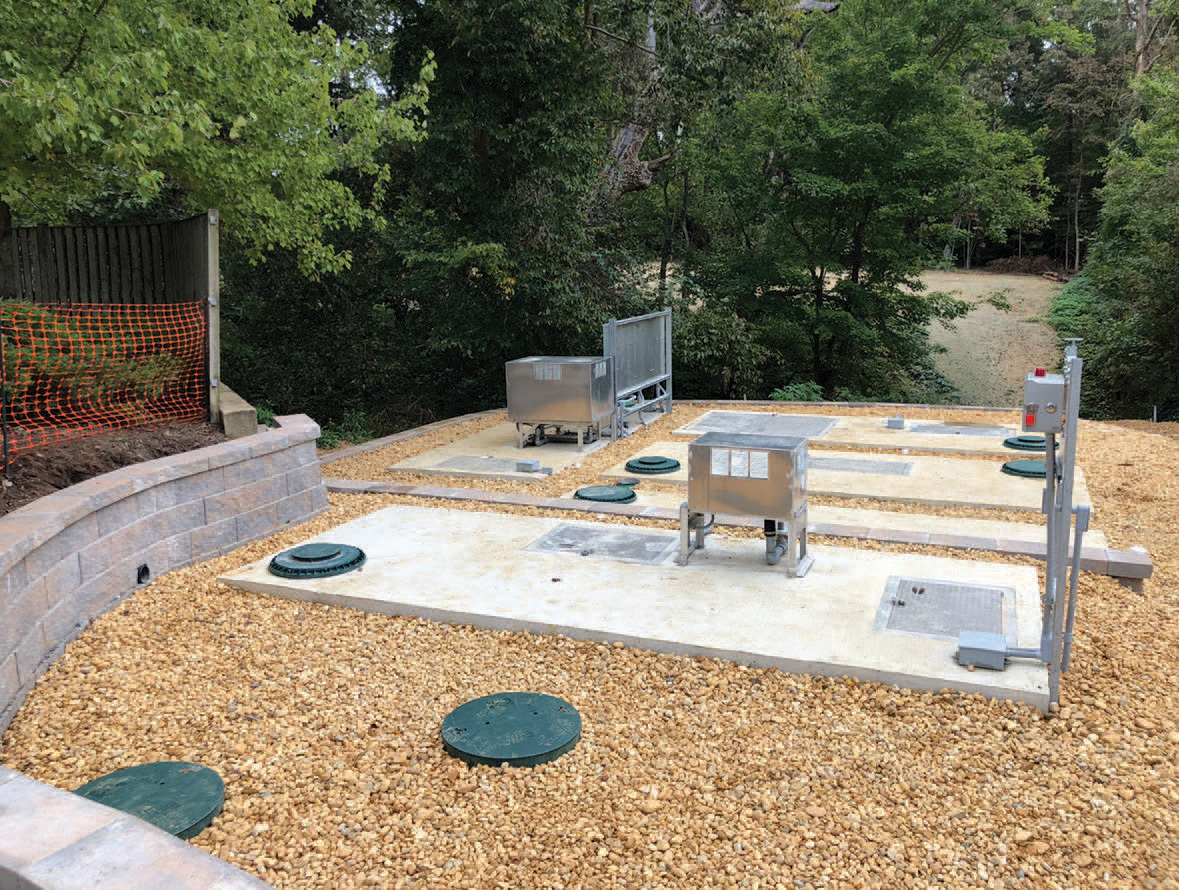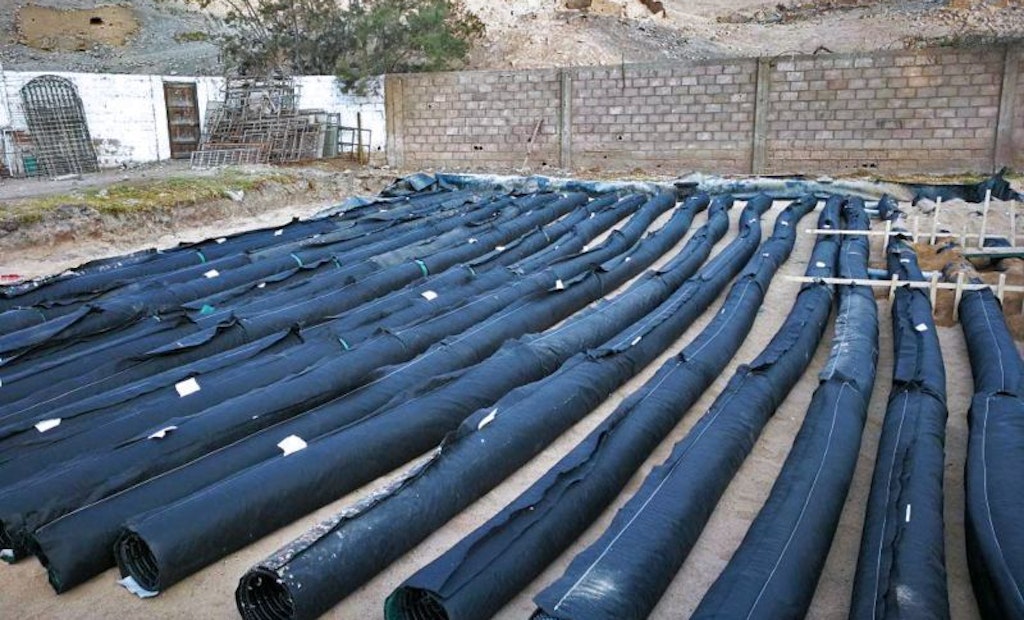Passive Presby Environmental Inc. system chosen for Peru nonprofit facility
Problem: Asociación Hogar CIMA is a nonprofit organization in Peru that helps children and adolescents who live on the street or who are in high-risk situations and require rehabilitation. The organization was in need of a new septic system.
Solution: The organization chose a septic tank for pretreatment of raw domestic wastewater. The reinforced concrete septic tank was designed with a capacity of 4,755 gallons. They chose the Advanced Enviro-Septic (AES) System, a passive combined treatment and dispersal system from by Presby Environmental Inc. (PEI) to treat and disperse 3,170 gpd of wastewater. The design includes 100 AES pipes distributed through a bed of 20 rows of five pipes per row. This water is recovered entirely through a network of drains and a waterproof membrane under the pipes. The treated water is returned to a water tank for irrigation. The system design consisted of a uniform distribution of the wastewater effluent between the pipe rows using a distribution chamber equipped with equalizers. The equalizer, with its ratchet wheel, is the only mechanical part of the system design. The system does not require electricity for treatment or dispersal when it receives wastewater by gravity.
Result: All wastewater at the site is treated passively. No maintenance is required, and no energy is spent on wastewater treatment. 800-473-5298; www.presbyeco.com
Splitter system helps maintain even distribution
Problem: A mid-Atlantic convenience store chain had drainfield failure at close to all of its stores being served by onsite systems. Since initial permitting, they went from a traditional grab-and-go that offered handmade sandwiches to a full food service menu, introduced a line of 12 coffee decanters (that must be dumped every 4 hours), baking in-store bread, making smoothies, soft serve ice cream, milkshakes, all while disposing of substantially more disposable wipes, installing low-flow fixtures and moving from chlorine to quaternary ammonium for disinfection. The client was unwilling to change standard operating practices for stores with onsite systems, so the client needed systems to meet the needs.
Solution: Hoot Systems collaborated with the maintenance providers and engineers on developing modifications to dosing times of the equalization tank, automating the aeration system to vary carbon dioxide delivery based on wastewater strength and calibrating cycle times to ensure proper retention intervals in each stage of the treatment process. In addition, they stabilized alkalinity using pH boosters, added specific chemicals to the neutralize disinfectants and used carbon for the completion of the nitrogen-reduction cycle.
Result: With the redesign and operational modifications, Hoot Systems and the collaboration team brought these decentralized wastewater systems into compliance without changing the owner’s day-to-day standard operating procedures. 888-878-4668; www.hootsystems.com.







